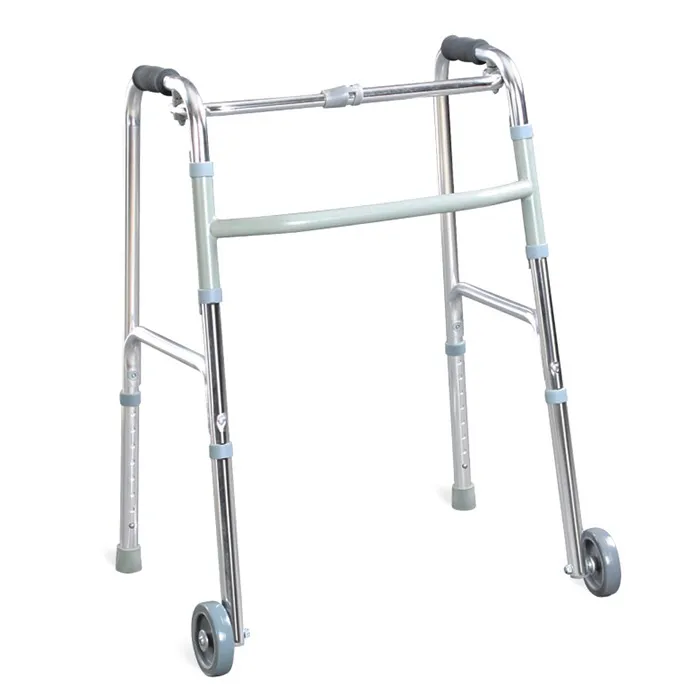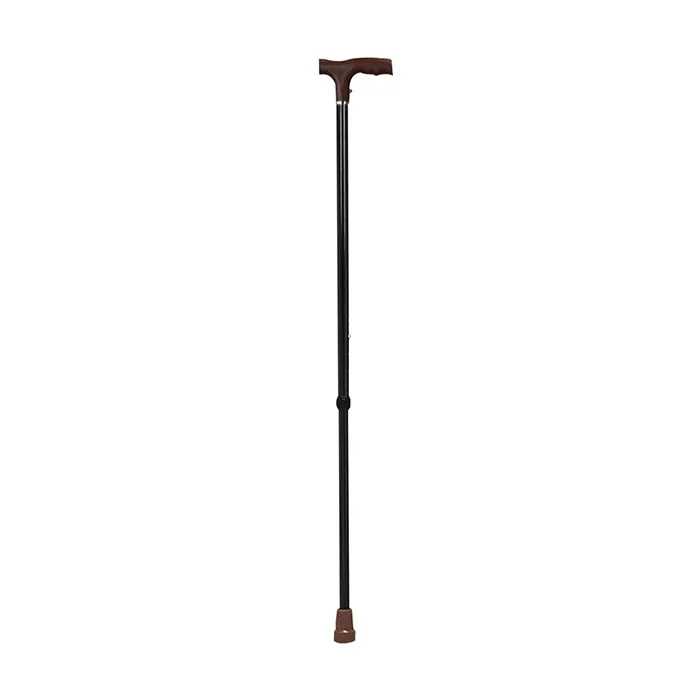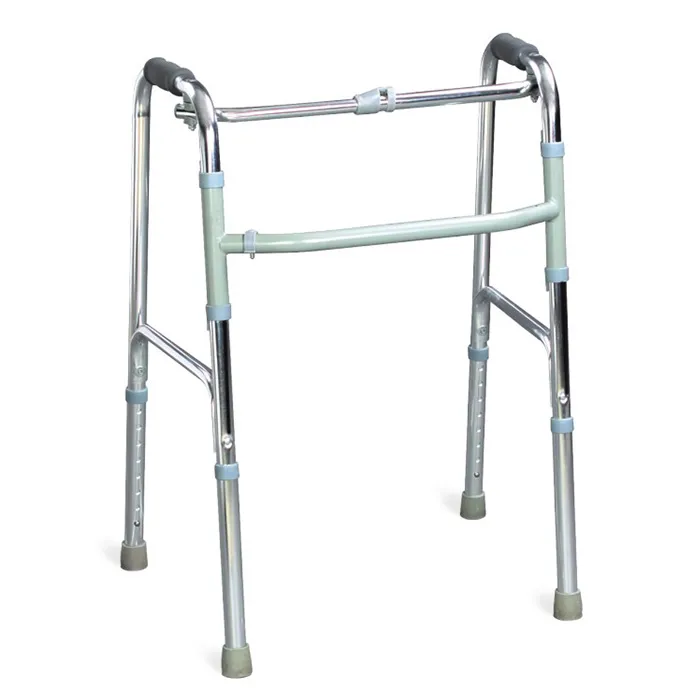In order to help the elderly maintain independence and increase the stability and safety of walking, walking sticks and walking frames have become very common assistive devices. Although both can help the elderly improve their mobility, many families and caregivers are often confused when choosing between them. Should they buy a walking stick or a walking frame for the elderly? What is the difference between these two tools and which one is more suitable for the needs of the elderly?
This article will conduct a detailed analysis around the two keywords "walking stick" and "walking frame" to help readers understand the differences, advantages and disadvantages of the two from multiple perspectives, and provide some practical suggestions to help everyone make a more suitable choice.


What is a walking stick?
A walking stick is a tool that assists walking, usually consisting of a straight rod and a handle for support. It helps the user maintain balance by supporting the weight of the body on one side. The design of a walking stick is simple, usually with only a vertical rod-like structure, and the length can be adjusted according to the height of the user. Walking sticks are widely used for patients with arthritis, leg muscle weakness or recovery.
Basic functions of walking stick:
A walking stick can provide additional support to help users increase stability and reduce stress on joints and legs. It is suitable for situations where a little support is needed when walking, especially when one leg or hip cannot bear all the weight.
What is a walking frame?
A walking frame is a relatively complex walking aid, usually composed of four support points (four wheels or rubber feet). The design of the walking frame allows users to provide more stable support by pushing, pulling or holding. There are many types of walking frames, including four-legged walking frames, wheeled walking frames, folding walking frames, etc. It can provide more support points and is usually more stable than a walking stick.
Basic functions of walking frame:
The function of a walking frame is to provide all-round stability, especially for patients who need greater support. It is often used for elderly people who need additional support to maintain balance or enhance walking stability.

What is the difference between a walking stick and a walking frame?
The difference between a walking stick and a walking frame:
1. Number of support points
·Walking stick: A walking stick usually has only one support point (or in some styles, two support points), which means it has a smaller support area. During use, the support of a walking stick mainly depends on one arm of the user. Although it can help improve balance, the support provided by a walking stick is relatively limited compared to a walking frame.
·Walking frame: A walking frame usually has four support points, providing more stable support. Whether it is a four-legged walking frame or a walking frame with wheels, it can provide more stability and security for every step of the elderly. This makes the walking frame more suitable than a walking stick for those who are weaker, especially those who need greater support.
2. Stability and flexibility
·Walking stick: The walking stick is simple in design and has high flexibility when used. The user only needs to hold the walking stick in his hand and stand on one foot, but because the walking stick has fewer support points, its stability is relatively low. For elderly people with limited mobility or unstable gait, the walking stick may sometimes not provide enough support, especially when they are prone to slipping while walking.
·Walking frame: The walking frame provides stronger stability through multiple support points, especially for those elderly people who need more support. Although it is heavier and less flexible than a walking stick, it provides greater stability and safety on uneven surfaces or when walking for long periods of time. This makes the walking frame particularly suitable for elderly people with poor gait or frailty.
3. Adaptability and usage scenarios
·Walking stick: The walking stick is suitable for elderly people who have only slight mobility problems and unstable gait, and usually only need simple assistance to help improve balance or reduce the risks caused by unstable gait. The walking stick is more suitable for daily short-distance walking and indoor use, especially for use on flat and hard surfaces. The lightness of the walking stick makes it a good partner for daily activities and can meet the mild support needs of the elderly.
·Walking frame: The walking frame is suitable for elderly people who need greater support, especially those with severe gait instability, chronic diseases or frailty. It is particularly suitable for uneven environments indoors and outdoors, providing more support. It should be noted that the walking frame is larger in size and is not as flexible as the walking stick, especially in a small space, where users may feel inconvenienced.
4. Operation difficulty
·Walking stick: The walking stick is easy to operate. The user only needs to hold the handle and walk with the support of the arm. The walking stick is easy to operate and is suitable for elderly people with certain strength and coordination. However, during use, the walking stick still requires a high sense of balance and coordination, and the user may need some training or time to adapt.
·Walking frame: The operation of the walking frame is relatively complicated. The user needs to move by pushing, pulling or supporting, which may require more strength and coordination. However, the stability and support provided by the walking frame make it more suitable for elderly people who need greater help. For those elderly people who have lost some of their mobility, the walking frame provides more stable support and less operation difficulty.

What are the advantages and disadvantages of walking stick and walking frame?
1. Advantages and disadvantages of walking stick
Advantages of walking stick:
·Easy to carry: The walking stick is small in size and light in weight, which is very easy to carry and store, and is suitable for daily use when going out.
·Suitable for people with mild mobility impairment: For those elderly people in good physical condition, the walking stick can effectively provide certain support to help maintain balance.
· Relatively cheap: Compared with walking frames, walking sticks are cheaper and have lower maintenance costs, making them suitable for families with limited budgets.
Disadvantages of walking sticks:
· Weak support: Since walking sticks have only one support point, their support and stability are low, and they are prone to tilting or imbalance.
· Not suitable for people with severe mobility problems: For elderly people with severe gait instability who need more support, walking sticks may not provide sufficient stability, which poses a safety hazard.
2. Advantages and disadvantages of walking frames
Advantages of walking frames:
· Provide more support: The four support points of walking frames can provide stronger stability and support, which is suitable for elderly people with severe gait instability.
· Wide range of applicable scenarios: Whether it is a flat ground or a slightly undulating place, walking frames can provide strong support and strong adaptability.
· Reduce the risk of falling: The stability of walking frames helps reduce the risk of falling for the elderly and improves the safety of users.
Disadvantages of walking frames:
· Larger size: walking frames are usually heavier than walking sticks and are inconvenient to use in small spaces.
· Complex operation: Compared with walking sticks, the operation of walking frames requires a certain amount of strength and coordination, and users may need time to adapt.
· Higher price: The price of walking frames is usually higher than that of walking sticks, especially walking frames with wheels, which may be more expensive.
Should the elderly choose walking sticks or walking frames?
1. According to the health of the elderly
· Mild mobility problems: For those elderly people who have a slightly unstable gait but can walk on their own, walking sticks are a good choice. Walking sticks can provide necessary support and help the elderly maintain balance, especially for daily use when going out.
· Severe mobility problems: For those elderly people with unstable gait who need additional support, or patients with serious diseases such as arthritis, fractures, and neurological diseases, walking frames are a more ideal choice. It provides more support, reduces the risk of falling, and can help the elderly walk more safely and comfortably.
2. According to the use environment
· Flat ground: If the elderly mainly walk on flat ground and have limited range of motion, walking sticks can provide sufficient support and are easy to carry.
·Uneven ground or long walking: If the elderly need to walk on uneven ground, or stand or walk for a long time, the walking frame will be more advantageous. The support it provides can effectively reduce fatigue and improve stability.
3. According to the budget
If the budget is limited, the walking stick is a cost-effective choice, which can meet the needs of most elderly people with mild mobility impairment. For those patients who need more support and stability, although the walking frame is more expensive, the support and safety it provides are undoubtedly worth the investment.

Are There Discounts for Bulk Orders?
Yes. Yikang Medical offers attractive discounts for bulk orders across our entire product range. Whether you're sourcing wheelchairs, hospital beds, or nursing aids, our factory provides tailored quotes with volume-based savings. Get in touch with our sales team for current promotions and customized deals.

